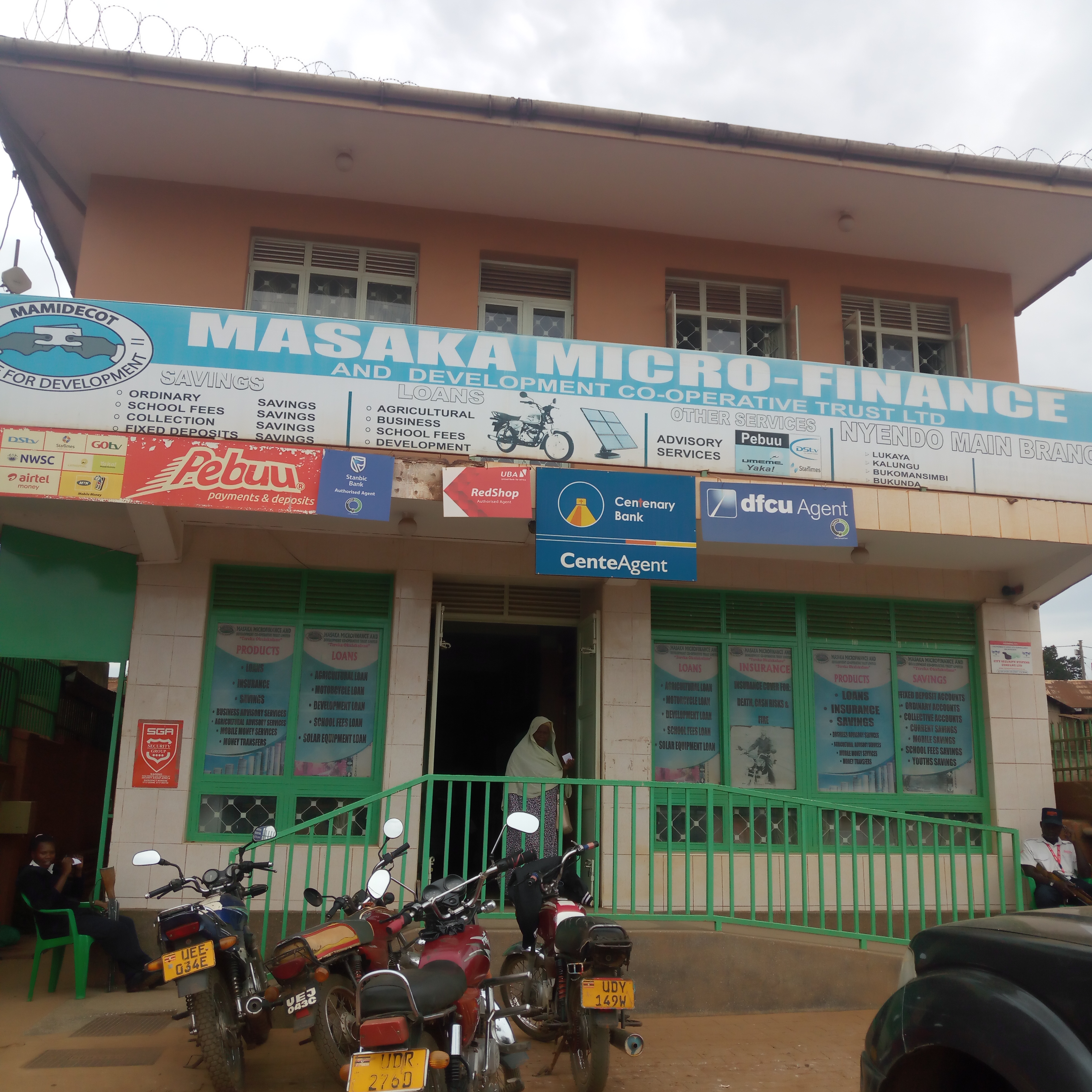Started as a village Savings Club in Masaka Municipality, Masaka Micro-Finance and Development Co-operative Trust Limited has emerged as the biggest Micro Finance Institution in Masaka sub-region.
MAMIDECOT, as the now –member society is commonly known, was established in the wake of the collapse of Masaka Farmers’ Cooperative Union, which for many years was the main go-to financial institution for many people in the area, majority of whom were known, farmers and practicing traders.
In 1999, 34 like-minded people converged to pull together resources in a savings group to tend to their financial needs. At the time, none of the members could have predicted the society’s looming exponential growth, says the SACCO’s board chairperson, Methodius Kasujja.
He says the institution was started as an elementary village savings scheme, and only progressively evolved into a bigger idea that was eventually embraced by other locals who begun to devote their loyalty to it.
“We agreed that each of the 34 members contributes a share capital of 100,000 shillings, and in a period of two months, we had accumulated at least Shs.6.4 million shillings all together, with which the SACCO was commissioned,” Kasujja told theCooperator.
He said that the SACCO initially benefited from the goodwill of its members, noting that its first equipment – chairs, desks, padlocks and a motorcycle, were all obtained as donations from members.
Similarly, he says, board members also volunteered their services, working for the first three years without any allowances and dividends. They also chose not to share the profits obtained on loans but to reinvest them in the SACCO.
This selflessness and dedication of the SACCO’s membership and leaders was critical to its survival. But its breakthrough would come two years later.
In 2001, the SACCO board moved to tap into a funding opportunity offered through the United Nations Development Program. Kasujja says, the program supported them with seed funding of Shs.22 million, which the SACCO added to its loan portfolio. UNDP also donated to them office furniture, a vault (metallic safe box) and typewriter.
Soon after, another opportunity would come knocking. As the 2001 election campaigns gained momentum, one of SACCO’s board members lobbied for and was granted Shs.5million from President Museveni, who was on his campaign trail in the greater Masaka sub-region.
“From then on, we (the SACCO) gained significant strength in terms of financial liquidity and public trust, because we were now able to lend more people,” says Kasujja.
Reasons for Resilience
On October 31st MAMIDECOT will now be celebrating 20 years of existence. From the 34 members with whom it started, it has since grown to 27,000 members. During that time, it has witnessed a number of SACCOs emerge, only to close shop before marking their 5th anniversary.
So what has MAMIDECOT done differently? Kasujja attributes their SACCO’s resilience to a strong foundation, but also being willing to learn from the failure of its colleague SACCOs. “Whenever another SACCO closes, we try to find out why, and avoid repeating the same mistakes,” he says.
At its inception, the SACCO’s founding Board Chairperson Everest Kayondo had discouraged the idea of having political or religious groups interfere in the management of the institution despite its broad base. That advice, later adopted as a culture at the SACCO has proved consequential to the SACCO’s survival.
“It (the SACCO) became an area of convergence of people with different opinions in all aspects of social life. The SACCO management at all times strives to remain neutral and transparent in everything they do, which has earned it members’ trust and commitment to its growth,” Kayondo said.
Of MAMIDECOT’s 27,000 members, approximately 20,000 are involved in the agricultural value-chain. As such, the SACCO offers affordable loan products along the entire value chain, only charging 2 percent interest rate on Agriculture and 2.5 percent on trade.
The SACCO’s loan portfolio now stands at Shs.12 billion, with member share capital at Shs.7.5 billion and overall working capital at Shs.16 billion.
With growth in capital available for member borrowing, Kasujja says the SACCO is now able to make an annual gross profit of at least a billion shillings, becoming the leading microfinance institution in the entire greater Masaka sub-region.
Wasswa Ssempijja, the Community Development Officer Masaka District says the SACCO has been a model in the district. “They have a religious book-keeping culture and have been strict on ensuring that members uphold their loan obligations. Other SACCOs should borrow a leaf,” he told theCooperator .
